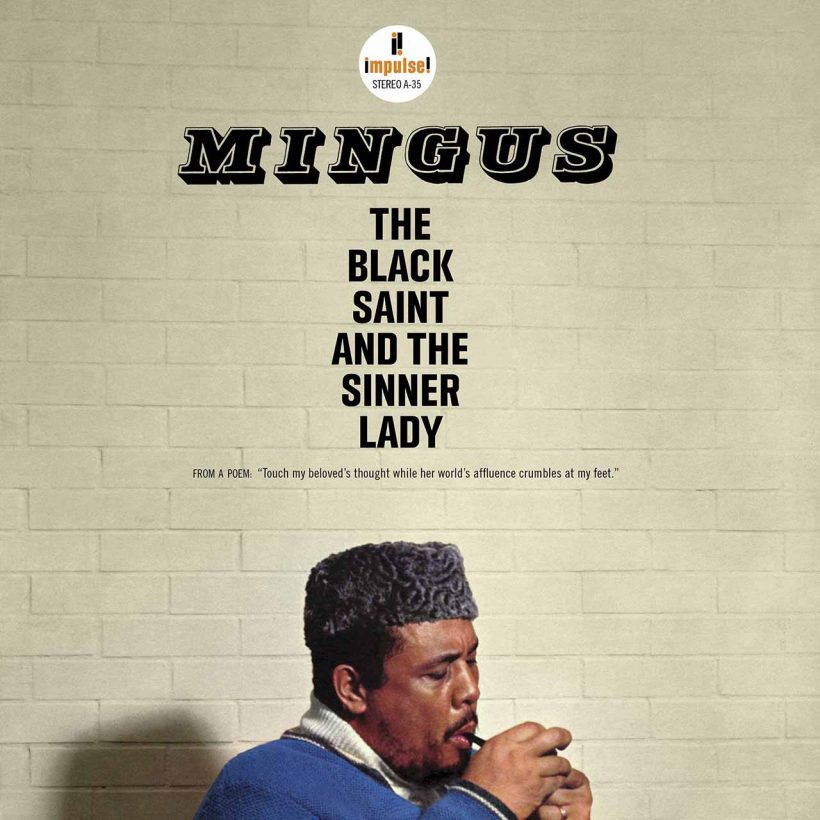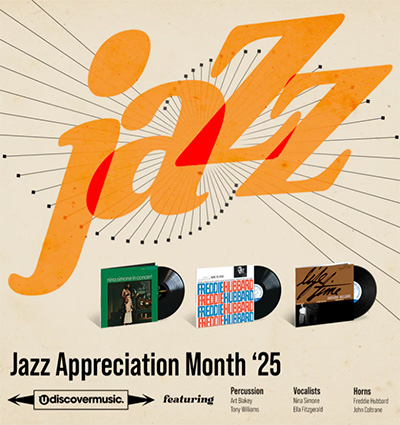‘The Black Saint And The Sinner Lady’: A Charles Mingus Masterpiece
The story behind one of the first albums to be shaped by studio editing.

The unalloyed artistic triumph that was The Black Saint And The Sinner Lady came on the back of one of the biggest disasters in Charles Mingus’ storied career. In October 1962, Mingus’ much-anticipated big band concert at New York’s Town Hall turned out to be a catastrophic failure. A perfect storm of an unfeasibly tight deadline, insufficient rehearsal time, poor organization, and a dreadful sound balance conspired to tip Mingus over the edge; so much so, that the notoriously volatile musician summoned his psychotherapist Dr. Edmund Pollock during the interval to calm him down. But when the concert – which was recorded by United Artists and later brutally edited for an LP release – resumed, things descended into greater chaos and the police were called, trying to placate an angry crowd demanding their money back.
Critics mercilessly savaged both the concert and the resulting album, but there was one good thing that came from the Town Hall debacle: The presence in the audience of Bob Thiele, a producer at ABC/Paramount’s new jazz imprint, Impulse! Thiele produced John Coltrane’s groundbreaking albums for the label, and offered Mingus a recording contract. In his copious liner notes for The Black Saint And The Sinner Lady, Mingus was quick to acknowledge Thiele’s support: “Thanks, man, for coming to my Town Hall open recording session, hearing the music, liking it, and hiring my band to record for your company when the critics scared the pants off the people for whom I wrote the music.”
Listen to the Charles Mingus piece The Black Saint and the Sinner Lady now.
The Black Saint And The Sinner Lady was one of Mingus’ most ambitious projects and grew out of a piece that he had honed on stage using a ten-member group during a three-week residency at the Village Vanguard, a month on from the Town Hall fiasco.
Originally envisioned as a single, continuous long-form composition, Mingus revealed in 1964 that he “was urged to make it into several pieces for marketing reasons” by his record label. The studio session under Thiele’s watch took place on January 20, 1963, and found Mingus adding classical guitarist Jay Berliner to an ensemble that included pianist Jaki Byard, two trumpets, three saxophones, a trombone, and a tuba. On drums was stalwart Dannie Richmond, who had been with the bassist since 1957.
Mingus intended the suite as a kind of jazz ballet – “I wrote the music for dancing and listening,” he explained in the liner notes – and the resulting composition, with its dramatic contrasts, is lushly expressionist and vividly pictorial. Berliner’s evocative Spanish guitar lines, highlighted in the suite’s third and fourth movements, imbue the music with a pronounced Iberian flavor. This was deliberate by Mingus, whose intention was “to mirror the period of the Spanish Inquisition and El Greco’s mood of oppressive poverty and death.”
Mingus never clearly explained what The Black Saint And The Sinner Lady is about, but its meaning can be sensed through the subtitles he gave to each of the suite’s six parts; for example, “Track A – Solo Dancer” he labeled “Stop! Look! And Listen, Sinner Jim Whitney!” and the sixth movement, “Mode F – Group And Solo Dance” he described as “Of Love, Pain and Passioned Revolt, then Farewell, My Beloved ‘til It’s Freedom Day.”
Clearly, the work can be perceived as an allegory about his own life experiences, many of which were stained by racial injustice; a situation that understandably embittered him and gave him a raging desire for justice and freedom. The intensity of those feelings and the heat of his anger can be sensed in the moments where the listener is met with gargantuan waves of tonal color. Violence is omnipresent throughout; there are times when the music seems on the verge of breaking down into chaos.
Though The Black Saint And The Sinner Lady is regarded as being fiercely avant-garde, it reverberates with echoes of jazz’s past; bluesy muted trumpets with their wah-wah-like effects evoke the great Duke Ellington, one of Mingus’ idols, while passages of loose collective improvisation conjure the spirit of the 1920s New Orleans jazz sound associated with Louis Armstrong and Jelly Roll Morton.
The album credits tell us that Mingus recorded The Black Saint And The Sinner Lady in a single day, but what they don’t disclose is that Mingus returned to the studio to add liberal helpings of solo alto saxophone, played by Charlie Mariano. The saxophonist revealed to the BBC’s Steve Allen in 1966 how Mingus directed him in regard to overdubs: “He said ‘OK, when I point to you, start playing and, when I wave at you, stop. And, when I point, start again.’ And that’s how the whole thing was made. Because there wasn’t any alto jazz written in the thing at all, it was all dubbed in a week later.”
Overdubbing wasn’t unheard of in jazz – composer/pianist Lennie Tristano had experimented with it in the early 1950s – but it certainly wasn’t the norm. The notion of multitrack recording also wasn’t new to Mingus, who had famously overdubbed his part on the live album Jazz At Massey Hall, which he recorded as part of the supergroup The Quintet (alongside Charlie Parker, Dizzy Gillespie, Bud Powell, and Max Roach) when the recording equipment failed to record his bass properly.
But what made The Black Saint And The Sinner Lady remarkable wasn’t the overdubbing, but that Mingus shaped the finished form of his big band suite using the studio as an instrument. “There were literally 50 splices to be made after the date – all in Charlie’s head,” producer Bob Thiele told Jazz magazine in 1964, recalling the numerous edits Mingus made.
In the album’s liner notes, Mingus singled out for praise studio engineer Bob Simpson, who edited the recording per his instructions; editing analog tape required a splicing block and razor blade to surgically cut the tape to make edits and then use special adhesive tape to join up the alterations and make them sound seamless. Mingus was certainly ahead of his time in the jazz world, if not the pop one, where editing eventually became commonplace. (Six years later, producer Teo Macero shaped the structure of another jazz masterpiece, Miles Davis’ Bitches Brew, via creative editing).
In the end, Mingus was proud of what he had created, praising his new label in the liner notes for their “patience to give me complete freedom.” On the album’s release in July 1963, jazz critics were unanimous in their praise for The Black Saint And The Sinner Lady, recognizing it as a masterpiece. Interestingly, Mingus, who had always been unhappy with the term “jazz” – “to me the word means discrimination, second-class citizenship, the whole back-of-the-bus bit,” he once said – allowed Impulse! to market the record as “ethnic folk-dance music.” He also persuaded Dr. Pollock to pen a second set of liner notes, which brought a psychological perspective to the therapist’s evaluation of his patient’s music.
Widely considered one of the greatest jazz albums of all time, The Black Saint And The Sinner Lady was more than just a piece of music to its creator; for Mingus, who described it as “my living epitaph from birth til the day I first heard Bird and Diz,” it chronicled a soul-searching autobiographical journey that ultimately brought him some kind of meaningful catharsis. Emerging from the debris and humiliation of the disastrous Town Hall concert, The Black Saint And The Sinner Lady was a musical miracle that not only proclaimed Charles Mingus’ genius but also confirmed his place in the pantheon of great American jazz composers.
Listen to the Charles Mingus piece The Black Saint and the Sinner Lady now.















David Sandler
February 13, 2023 at 1:41 pm
Absolutely. In my humble opinion one of the greatest compositions /performance /efforts of the 20th century.
Sebastian Baca
February 13, 2023 at 9:55 pm
One of the best albums categorized as jazz I ever had the pleasure of listening to! Now to order another CD copy…